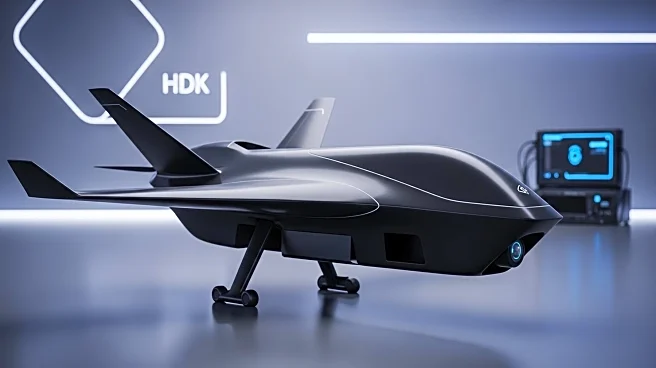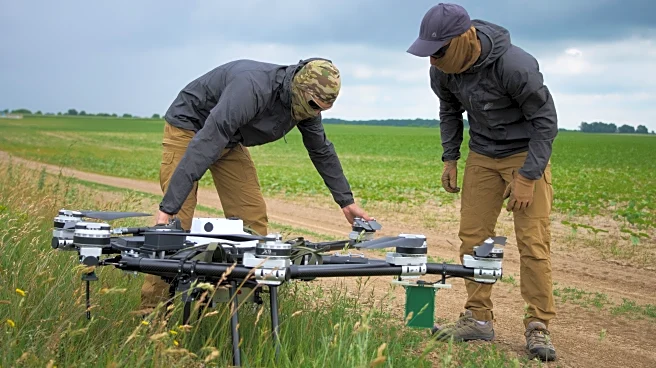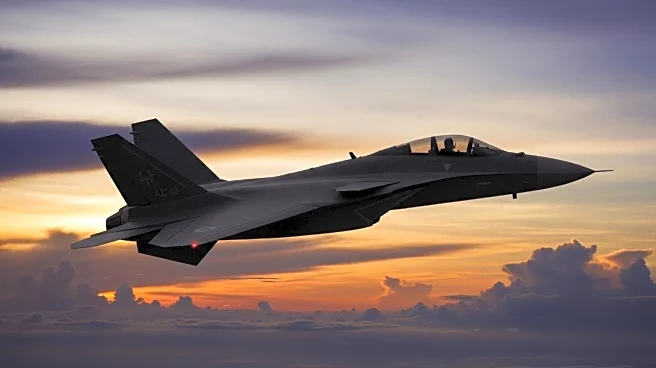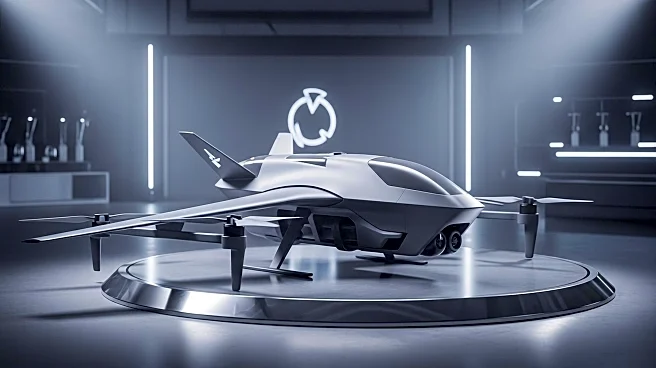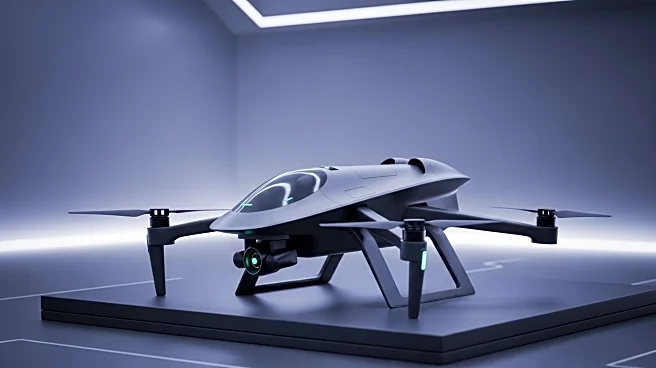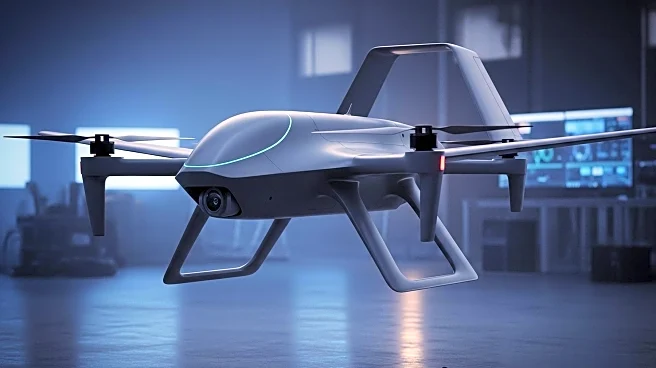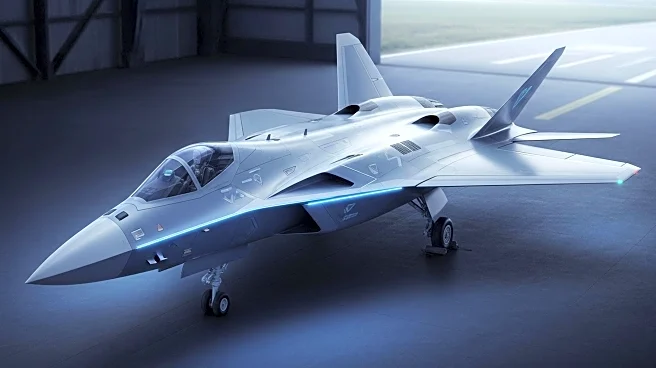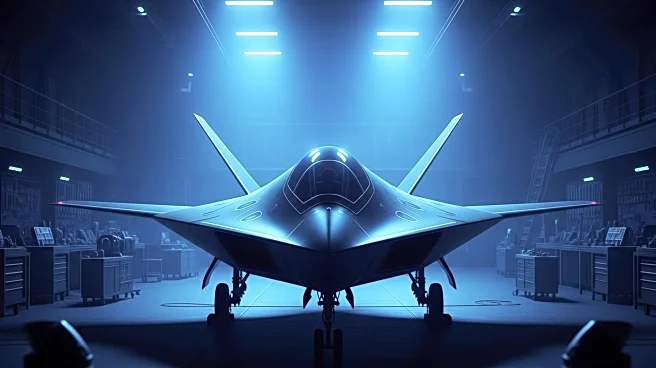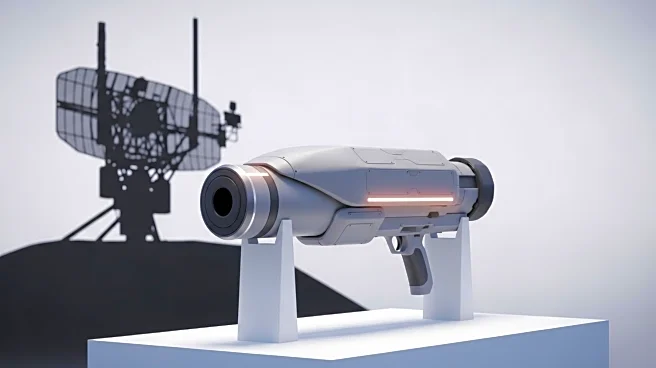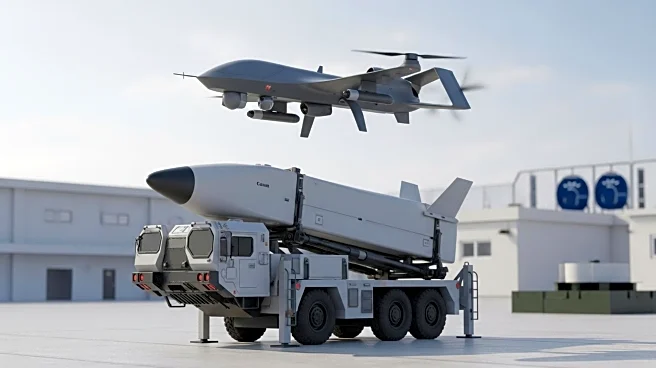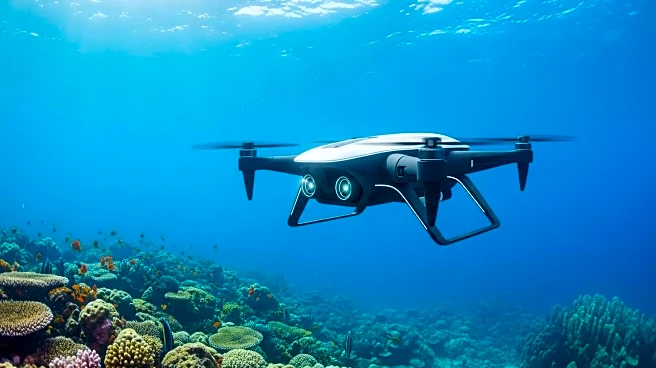What is the story about?
What's Happening?
Lockheed Martin's Skunk Works division has introduced a new stealthy air combat drone named Vectis, designed to be highly adaptable and survivable. The drone is part of the Collaborative Combat Aircraft (CCA) program and emphasizes modularity and interoperability. Vectis is expected to fly within two years and is designed to provide multi-mission flexibility, including air-to-air, air-to-surface, and intelligence, surveillance, and reconnaissance (ISR) capabilities. The drone features a lambda wing planform and stealth design elements, aiming to offer advanced capabilities to U.S. and allied forces.
Why It's Important?
The introduction of Vectis represents a significant advancement in military drone technology, emphasizing stealth and adaptability. The drone's design reflects the growing importance of unmanned systems in modern warfare, offering cost-effective solutions for complex missions. Vectis's capabilities could enhance the strategic advantage of U.S. and allied forces, providing new options for surveillance and combat operations. The broader impact includes potential shifts in military strategies and increased investment in drone technology, highlighting the role of innovation in defense.
What's Next?
Vectis is expected to undergo testing and evaluation before its deployment, with potential integration into existing military systems. Lockheed Martin may collaborate with other defense companies to enhance the drone's capabilities and ensure interoperability with current technologies. The development of Vectis could lead to further advancements in drone technology, influencing future military strategies and procurement decisions. The focus will be on maximizing the drone's effectiveness in various operational environments, with potential applications in both domestic and international missions.
Beyond the Headlines
The unveiling of Vectis raises questions about the ethical implications of using advanced drones in warfare and the potential impact on global security dynamics. The emphasis on stealth and survivability reflects the evolving nature of military technology and the need for innovative solutions to address emerging threats. The situation highlights the importance of collaboration between defense companies and governments in developing cutting-edge technologies. The broader implications include potential changes in defense policies and increased focus on unmanned systems in military operations.
AI Generated Content
Do you find this article useful?
